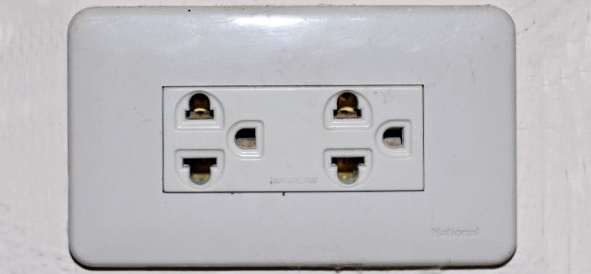(moved from New Members 2018 thread)
Bazza139 wrote:*snip*
*The rest of the world runs on 220-240 volts, so be sure to bring a transformer BEFORE you plug in yer 110 volt stuff here, fried laptops being quite common for American Expats...
Looks as if what I'll need is a new cord, or an adapter.
I was going to look into what I need to purchase for my HP laptop, and then I thought to take a close look at the fine print on the HP 19.5 V transformer that came with my HP Envy.
It lists INPUT as:
100-240 V~1.6 A 50-60 Hz
and is also labeled:
WIDE RANGE INPUT
The cord from the transformer to the laptop is fixed, but the cord from the power source to the transformer unplugs, and looks kind of like the female connection on this transformer: ·°· 
So I'll need a male end on a cord like that, with the other end being the male end to the Vietnam 240 V power outlet...
OR...
A US 3-prong adpater to Vietnam grounded plug, like this?:
Is this an accurate depiction of most power outlets in Vietnam? 

















